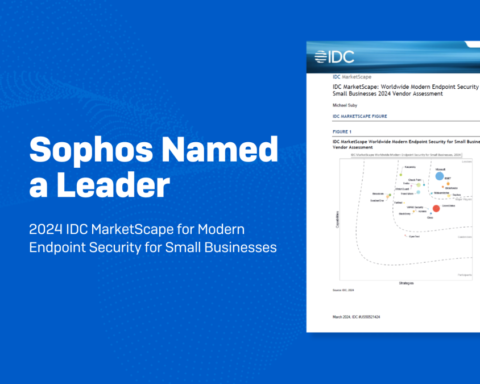Fraudsters have transformed cybercrime into a sophisticated and perilous dance. They now use artificial intelligence (AI) to enhance social engineering attacks and leverage malware-as-a-service (MaaS) to carry out their malicious attacks.
Faced with an influx of sophisticated cyber threats, it’s critical for organizations to invest in layered security defenses. Managed security services like managed detection and response (MDR) are integral in monitoring, investigating and responding to threats in real time. But without a strong and comprehensive foundational cybersecurity posture, managed services alone can’t effectively mitigate threats.
The reality is that no single approach is capable of protecting against all attacks. To ensure comprehensive defenses against emerging threats, organizations must prioritize proactive measures that can stop attacks before they even start—particularly strong endpoint protection.
Why You Should Implement A Multilayered Approach To Cybersecurity
Endpoint protection involves securing the various endpoint devices within an organization’s network against potential cyber threats. Endpoint security is crucial because weak endpoint protection makes it easy for adversaries to gain unauthorized access through these digital entrances and execute their attacks.
As adversaries continue to refine their attack techniques, layered protection that covers every stage in the attack chain becomes imperative. To illustrate the importance of this approach, consider a real-world example. Last year, our Incident Responders were brought in to remediate a cybersecurity incident and found two files that were left behind on compromised machines.
After further investigation, they identified the files as a cryptographically signed Windows driver and an executable “loader” application built to install the driver—both of which were used in a failed attempt to disable endpoint security tools.
Our client’s endpoint protection included anti-tampering capabilities that prevented adversaries from deploying ransomware, but if their endpoint protection was weak or misconfigured, the attack could have succeeded.
In addition to stopping attacks upfront (as we’ve just seen in this scenario), strong endpoint protection also accelerates human-led threat detection and response to threats that technology alone cannot prevent. By filtering out the majority of attacks, security teams can focus on fewer incidents for more accurate detection and response.
While it can be tempting to overlook the significance of your foundational security measures—especially when you’re surrounded by conversations about the latest cutting-edge security tools and services—endpoint protection and managed security services work best together.
Three Ways To Boost The Effectiveness Of Your Endpoint Protection
A blend of proactive endpoint protection and reactive, human-led threat detection and response is crucial in maintaining airtight cyber defenses. Although technology can’t stop every attack, strong endpoint protection measures can buy defenders time against advanced, human-led attacks. The more effective your endpoint protection, the better-equipped your human-led detection team is to do its job.
- Audit for ongoing endpoint improvements.Conduct regular cybersecurity audits to ensure the proper configuration of your security tools. Your organization probably has many of the right endpoint protection measures already in place. But considering security tool misconfigurationis the top perceived cybersecurity risk for IT and cybersecurity professionals in 2023, it’s worth it to ensure your security tools are properly configured and updated.
By maintaining strong configurations and updating tools on a regular basis, you can reap the full value and protection of your endpoint investments. While some service providers offer account health checks, you can also use industry tools to execute audits. As a result, you can identify areas for improvement and ensure you’re making the right ongoing adjustments to your portfolio of endpoint security tools.
- Leverage behavior-based protection.To ensure comprehensive protection against cyberattacks, you must fortify your defenses across the entire attack chain so you have multiple opportunities to halt potential threats.
Even though adhering to best cybersecurity practices—like using complex passwords and multifactor authentication—is incredibly important to your organization’s security posture, the sophistication and unpredictability of modern cyber threats make additional protection indispensable.
Therefore, it’s wise to complement baseline measures with behavior-based security measures throughout the attack chain. For instance, it’s impossible to say what the next ransomware strains will look like, but we do know the types of behaviors attackers are using to execute attacks. By focusing on behavior rather than relying solely on known signatures, this approach enhances your ability to detect and mitigate unknown threats.
When you implement behavior-based protection at multiple points across the attack chain, you can also detect and mitigate threats faster.
- Align defenses with the cyber threat landscape. Constant awareness of the evolving cyber threat landscape enables you to optimize your defenses against the attack environment. For example, according to my company’s research, exploited vulnerabilities and compromised credentials are the two top root causes of ransomware attacks today. Knowing this, you can prioritize endpoint security controls that best mitigate these threats, including anti-exploit and credential capabilities, as well as enforce broader security measures like multifactor authentication.
No endpoint protection measure is impermeable. However, by stopping the majority of attacks before they occur, strong, layered endpoint security enables you to mitigate risk and get more out of your managed security services. When you strike the right balance between baseline security measures and reactive cybersecurity services, you can better navigate today’s cyber threat landscape with confidence.








